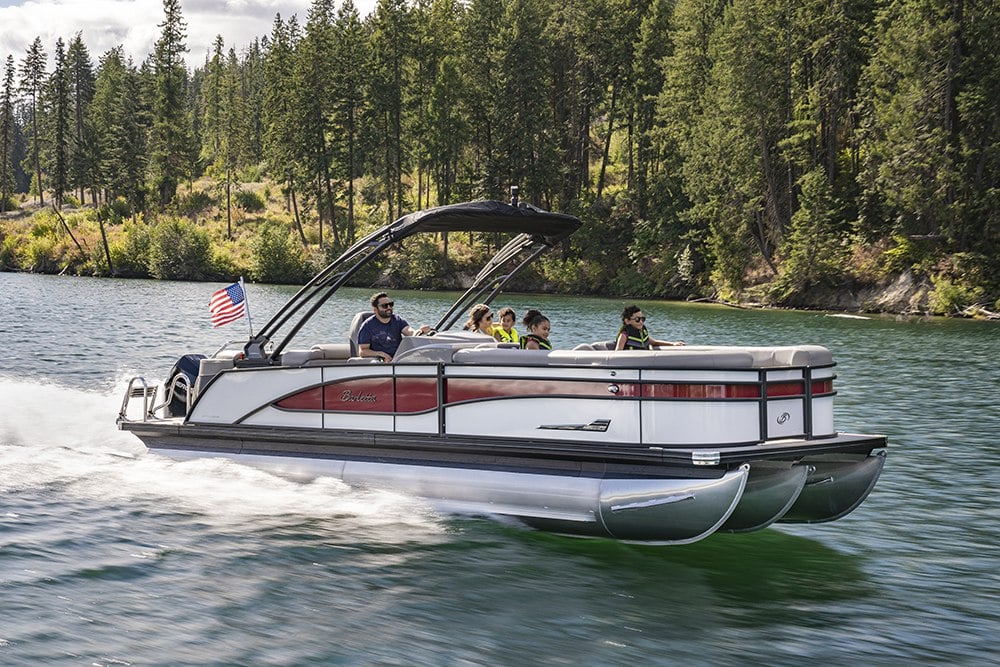What is a Bilge Pump and How Does it Work? (Info Every Boater Needs to Know)
It’s nearly impossible to keep your boat completely dry. At some point, you will likely get at least a little bit of water pooling in the bottom of the boat. It could be from rain, spray from waves, or even jumping on your boat after a swim. Any of those things can cause water to gather in the hull.
Although a little bit of water is not likely to cause damage, if a lot of water were to pool, it could cause some dangerous and pricey problems. This is where bilge pumps come into play. These systems help regulate the water levels inside the boat to keep too much water from gathering at the bottom.
Bilge pumps are an important part of the complex structure of most boats. They are the product of an effective design to improve the safety of a boat. Most boats built today are manufactured with bilge pumps so it’s important to understand their function and how they are set up on your boat.
I'm sure you understand that water pooling inside your boat is not ideal. If too much water were to find its way in, the boat would ultimately sink. That is an extreme case but very possible depending on the type of boat you own.
For instance, this would be the case for a vhull boat, but not a pontoon boat. That’s because the flat deck of a pontoon can’t take on water like the deep hull of a speed boat or towboat. A pontoon boat, however, will sink if the toons fill completely up with water.
For that reason, vhull boats will have bilge pumps in enclosed areas such as the engine compartment. The bilge pump on a pontoon boat will be found in storage compartments such as the center toon storage or in-floor cooler storage in order to keep those areas dry.
By keeping water out of the lower parts of your boat, you will lessen the chance of damage due to corrosion on the inside of the boat. Corrosion can tear your boat apart so it’s good to have systems like this in place to prevent that.
What is a Bilge Pump?
A bilge pump is a system put in most boats to keep excessive water from pooling inside of the boat. Considering you want your boat to float above water, this is a necessary component to have on board.
A bilge pump will pump excess water out of the bilge (the lowest point on the boat) and back into the lake, ocean, river, or wherever you are boating. Water finds its way into the boat through numerous activities. It can be splashed into the boat on a windy, wavy day. Sometimes built-in coolers drain to the bilge when they are emptied.
Another way water may get in the boat is if it starts raining unexpectedly and the boat is exposed to the elements. There are a number of situations when water will get in your boat and into the bilge as well.
That said, you don’t want that water sitting at the bottom of your boat forever. This is where a bilge pump comes into play. There are two different types of bilge pumps you may come across which are manual and automatic.
Manual bilge pumps are a good option for small recreational boats such as kayaks and canoes. These pumps are handheld and easy to use in non-motorized vessels. You’ll even see manual pumps built into some motorized boats.
Built-in manual bilge pumps must be turned on when you need to drain the bilge. You can usually find an on/off switch at the helm in motorized boats. If your boat is equipped with one of these, be sure to keep an eye on the water levels inside the boat and turn it on before you take off from the dock. Don’t forget to turn it off once the water is gone as it will keep running and can seize up if it runs dry too long.
As for automatic bilge pumps, these are activated by water levels in the bilge. These pumps have an automatic switch on them that turns on when water reaches a certain level on the pump system. These are perfect for any sized boat. They work well on maintaining low water levels in the bilge.
Many large boats are required to have multiple bilge pumps on board. This is required for safety reasons. Multiple bilge pumps maintain the overall health of the boat better than a single bilge pump is able to. Especially if one bilge pump were to break, the other(s) would keep the boat from filling completely with water.
Bilge Pump Requirements
Different states and local waters have rules and regulations on these systems. Depending on the size of the boat, bilge pumps may be required by law. Large boats often require multiple bilge pumps as a safety precaution. Be sure to check your local laws before you head out on your boat.
One standard rule is that if a boat has sleeping quarters, multiple bilge pumps are required for safety reasons. Exactly how many are required depends on the size of the boat. It also may vary depending on where you are boating. Be sure to double-check before launching your boat in a new place.
Other factors may also influence whether or not you are required to have a bilge pump system in your boat. Be sure to check out your local and state laws to figure out if your boat needs to be equipped with a bilge pump.
How are Bilge Pumps Set Up?
Bilge pumps are often located at the lowest point of your boat's hull or the bilge. This way any water that collects in this area can be expelled from the boat and helps to prevent damages that are caused by water.
The reason a bilge pump is so important is that it can warn you that the boat is taking on water when it shouldn’t. If there is a small hole in your boat, the bilge pumps can likely pump the water out as fast as water is entering the boat. This would help give you time to get your boat back to safety.
This is not a system you want to solely rely on so be sure to seek help if your vessel is taking on water. A bilge pump is only an accessory there to improve the performance of your boat. It should not be relied on to keep your boat floating.
Does My Boat Have a Bilge Pump?
Before getting too excited about heading out on your boat, be sure to check if your boat is equipped with a bilge pump. It’s good to know whether your boat can manage the water in the bilge or not.
It would also be beneficial to know whether your boat has a manual bilge pump on board or an automatic bilge pump. Some manual bilge pumps are hand-held. There are other manual bilge pumps that are electronic and need to be turned on using a switch on the dashboard. Automatic bilge pumps operate without needing to be turned on with a switch.
An easy way to check your boat is to look this up in the manufacturer's owner’s manual. You can also have someone knowledgeable of the boat help you understand the location of the bilge pump(s). This way you know where to check to keep the bilge pumps working in top condition.
Barletta’s Bilge Pumps
Barletta pontoons are equipped with two bilge pumps. You can find one in the center toon storage and the other in the in-floor cooler locker if your Barletta is equipped with either of these compartments.
These bilge pumps are automatic meaning that they’ll kick on when they sense water at a certain level. There are two pumps to help prevent water from pooling in the bottom of the center hull. The other two toons are completely enclosed so this is not a likely concern for them.
Bilge Pump Maintenance
It’s a good idea to regularly check the functionality of a boat's bilge pump. Regularly checking this system will help maintain a boat's performance. Making a habit of regular check-ups on all the systems in your boat will allow you to catch any problems early on. This will help prevent mid-summer service calls and pricey repairs.
Something else to know is that you can often hear a bilge pump running. If you hear it running for long periods of time, there might be an issue. Either the boat is taking on too much water or the pump is malfunctioning.
If it’s running without the presence of water, the pump could overheat and “die”. If this happens the bilge pump will not work anymore and will need to be replaced.
A good rule to follow is that if you hear your bilge pump running and you’ve checked the bilge and there’s no water in the bilge, disconnect it to avoid overheating the pump. Be sure to contact your dealer to get the bilge pump serviced as soon as you can if you are having this problem.
Always be sure to check the condition of your bilge pumps. Make sure there’s nothing in the bilge blocking the pump and that it hasn’t corroded. This would also cause the pump to break and need replacing.
A Key Component
Now you should have a clear understanding of what a bilge pump is and what its function is. I’m sure at this point, you can understand why they are so important. It is a system that is a necessity on boats of all sizes.
Fully understanding the function and location of the bilge pumps is critical to the long-term maintenance of your boat. Making sure the bilge pumps are in perfect working order will keep your boat working and performing in top condition.
With this information, you can feel confident about keeping the interior of your boat dry and clean. If you want to learn more about your boat's motor maintenance, battery system, or any troubleshooting ideas, visit our learning center.



.png?width=700&name=LC%20(1).png)